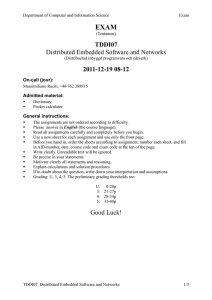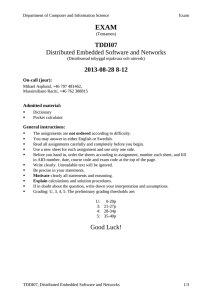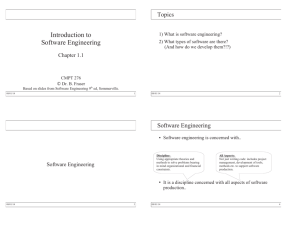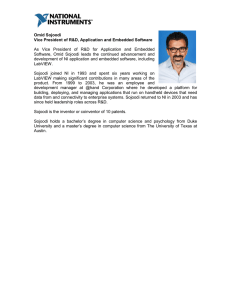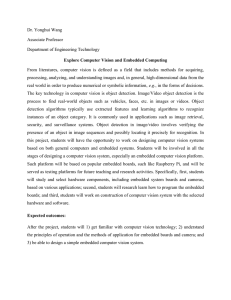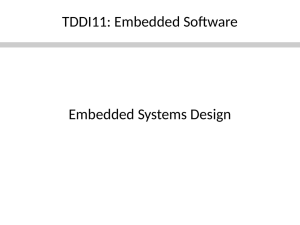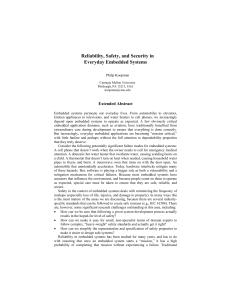EXAM TDDI07 Distributed Embedded Software and Networks
advertisement
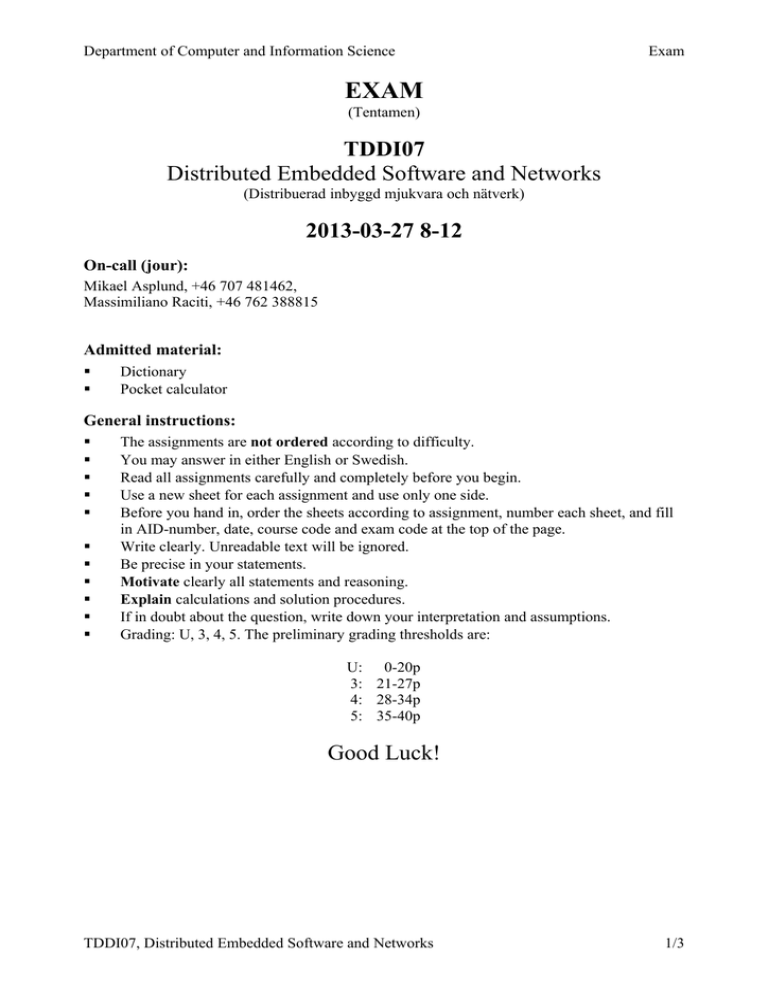
Department of Computer and Information Science Exam EXAM (Tentamen) TDDI07 Distributed Embedded Software and Networks (Distribuerad inbyggd mjukvara och nätverk) 2013-03-27 8-12 On-call (jour): Mikael Asplund, +46 707 481462, Massimiliano Raciti, +46 762 388815 Admitted material: Dictionary Pocket calculator General instructions: The assignments are not ordered according to difficulty. You may answer in either English or Swedish. Read all assignments carefully and completely before you begin. Use a new sheet for each assignment and use only one side. Before you hand in, order the sheets according to assignment, number each sheet, and fill in AID-number, date, course code and exam code at the top of the page. Write clearly. Unreadable text will be ignored. Be precise in your statements. Motivate clearly all statements and reasoning. Explain calculations and solution procedures. If in doubt about the question, write down your interpretation and assumptions. Grading: U, 3, 4, 5. The preliminary grading thresholds are: U: 0-20p 3: 21-27p 4: 28-34p 5: 35-40p Good Luck! TDDI07, Distributed Embedded Software and Networks 1/3 Department of Computer and Information Science Exam 1. Fundamentals (6p) a) Describe the difference between infrastructure-based networks and ad-hoc networks. (2p) b) Describe two strategies for extending the lifetime of a wireless sensor network. Comment on the drawbacks of each method. (4p) 2. Medium Access Control (6p) a) Describe the RTS/CTS mechanism. Give an example of a situation where this mechanism prevents collisions. (2p) b) Describe three problems of medium access control that can cause energy waste. (3p) c) The IEEE 802.15.4 MAC protocol combines contention-access periods with guaranteed time slots, what are these used for? (1p) 3. Routing and Data Collection (5p) a) Routing protocols can be categorised as flat, hierarchical or location-based. Explain each of these categories. (3p) b) What is a collection tree, and how can it be constructed? (2p) 4. Cellular Networks (4p) a) In the M2M terminology, sensors are categorised as direct or indirect. Which of these two sensor types is likely to have a lower power consumption? Why? (2p) b) What is the purpose of having different QoS classes in cellular communication? (2p) 5. Clock Synchronisation and Positioning (5p) a) Explain how often a set of clocks need to be synchronised if they required clock precision should be at most p. (2p) b) To determine its position, a node need knowledge of some other nodes position, direction and distance, two positions and two directions, three positions and distance or possibly some other combination. Describe three possible sources (measures) of the distance information, and relevant problems. (3p) 6. Resource Management (4p) a) What is weighted fair queueing (WFQ)? Can WFQ provide absolute delay bounds? (2p) b) Give two examples of enforcement-level QoS parameters in distributed systems (2p) TDDI07, Distributed Embedded Software and Networks 2/3 Department of Computer and Information Science Exam 7. Dependability and Security (6p) a) Describe the following attributes of dependability and how they can be measured in a real system (4p): • Availability • Reliability b) What is the difference between fault prevention and fault tolerance? Give one example method of each type. (2p) 8. Energy Management (4p) a) Describe what are the rate capacity and the relaxation effects of batteries. (2p) b) Explain the basic physical principle of why dynamic voltage scaling can be used to save energy. (2p) TDDI07, Distributed Embedded Software and Networks 3/3
